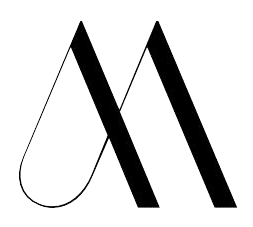In the world of psychology, understanding human behavior surpasses simply observing activities; it entails unraveling the mental procedures that assist those activities. One such critical component in this procedure is intent. Intentions act as the blueprint for our actions they direct what we intend to do, exactly how we come close to objectives, and eventually, just how our perspectives and ideas form our actions. But exactly what is purpose, and why is it so vital in anticipating actions? In this blog site, we will check out the role of intent in social actions, analyzing just how it acts as a bridge between attitudes and actual actions. We'll look into prominent concepts that illuminate exactly how our intentions create and just how they influence our day-to-day decisions.
What is objective and why is it crucial?
At its core, intent describes a frame of mind that overviews our actions towards accomplishing details objectives. It is the decision to do an activity or participate in a particular habits based upon inner inspirations, such as values, ideas, and wishes.Join Us Your Mind Your Body website In psychology, objectives are deemed an important link between our attitudes and succeeding actions. Think about intentions as the plan we propelled when we make a decision to take action. For example, if somebody plans to exercise regularly, that objective drives their habits, influencing their decision to head to the health club or take a walk in the park.
What makes purposes so crucial in social behavior is their predictive power. When we recognize a person's objectives, we can commonly predict their future actions. Nonetheless, while intents are a strong forecaster of behavior, they are not constantly foolproof. Numerous variables, consisting of exterior restraints and inner self-regulation, can influence whether a person follows through with their designated actions.
Theories of intent
To further recognize exactly how objective functions, allow's explore some key psychological concepts that shed light on the formation and influence of objectives. Two of one of the most prominent theories in this domain name are the Theory of Planned Behavior (TPB) and Self-Efficacy Concept. Both provide a structure for recognizing how intentions are created and how they affect real actions.
Theory of Planned Behavior (TPB)
Established by Icek Ajzen, the Theory of Planned Habits is one of the most commonly made use of versions to understand exactly how intentions cause actions. According to this concept, three crucial elements affect our objectives:
- Mindset towards the actions: This refers to the person's favorable or negative evaluation of executing a certain actions. For example, a person may have a positive perspective toward eating healthy and balanced food, thinking it will certainly result in better wellness results.
- Subjective standards: This involves the influence of others on our decision-making. If an individual really feels that important others, such as household, friends, or associates, anticipate them to engage in a specific behavior, it can influence their intent to act. For instance, someone might choose to stop smoking due to the fact that they understand their pals or partner it.
- Viewed behavior control: This describes the individual's belief in their capability to do the habits, commonly affected by external aspects (e.g., resources, skills, or possibilities). If somebody feels great that they can quit smoking cigarettes, they are more likely to plan to give up and follow up with it.
These three aspects mindset, subjective norms, and viewed behavioral control incorporate to create an individual's objective to do a habits. According to the TPB, stronger objectives are more likely to cause actual habits, offered that exterior factors, such as obstacles or absence of resources, don't interfere.
Self-Efficacy Concept
One more essential concept that clarifies the development of intents is the Self-Efficacy Theory, created by Albert Bandura. Self-efficacy describes a person's idea in their ability to do well in specific situations or complete tasks. According to Bandura, self-efficacy plays an essential duty in shaping our intents. The more powerful an individual's belief in their capacity to accomplish a goal, the more probable they are to form an intent to seek it. This belief influences their actions and determination toward the objective.
As an example, a person with high self-efficacy in their capability to research for exams is more likely to establish the purpose to research routinely. On the other hand, somebody that does not have self-confidence in their research skills may not even form the intention to begin planning for tests, therefore potentially threatening their academic efficiency.
Factors that affect intent formation
Comprehending exactly how purposes are developed calls for acknowledging the numerous factors that shape them. These factors are not just emotional yet also social and ecological. Allow's take a better look at a few of the crucial elements that affect how we create objectives:
1. Ideas about end results
Our ideas regarding the prospective outcomes of our actions substantially impact the development of our intents. If our team believe that a certain actions will cause favorable outcomes (e.g., health benefits, social approval, or personal growth), we are more likely to intend to participate in that actions. For example, if someone believes that working out will boost their physical wellness and look, they are more probable to intend to exercise frequently.
2. Social standards and pressure
Social influence plays an important function in purpose development. Our objectives are frequently formed by the assumptions, values, and standards of the social groups to which we belong. For instance, if an individual is part of a community that values environmental sustainability, they might create the purpose to adopt environment-friendly practices, such as recycling or decreasing their carbon impact, even if they really did not originally have those purposes themselves. Peer pressure, family assumptions, and social norms can all affect the purposes behind our actions.
3. Regarded control over habits
Viewed behavior control, as highlighted in the Theory of Planned Actions, describes an individual's understanding of their capacity to perform a given behavior. If an individual thinks they have the resources, skills, and possibilities to take part in a certain action, they are most likely to create a purpose to act. On the other hand, if a person perceives considerable barriers or obstacles that stop them from doing the habits, their objective might be weak or nonexistent. For example, a person that desires to exercise may lack the moment, resources, or physical capacity to do so, resulting in weak intentions.
4. Previous experiences
Previous experiences also play a pivotal function in shaping objectives. If we have had positive experiences in the past, such as efficiently attaining an objective, we are more likely to develop similar purposes in the future. Alternatively, negative experiences, such as failure or problems, can cause doubt or reluctance to develop new intents. For instance, if somebody previously attempted to stop smoking and fell short, they may be reluctant to form the intent to stop once again due to a lack of confidence in their capability to prosper.
The role of intention in anticipating habits
Intents are often regarded as the most effective predictors of behavior. Nonetheless, there are some vital caveats. The gap between objective and activity is not constantly straightforward, and numerous variables can avoid us from acting on our intentions, regardless of our best shots.
For example, a person might have a solid intention to consume healthily, however external factors, such as absence of time to cook, social influences (e.g., eating in restaurants with pals), or emotions (e.g., stress consuming), may hinder their capability to follow up with their purposes. This discrepancy between objective and action is referred to as the 'intention-behavior gap' and is an usual area of research in psychology.
Surprisingly, some research studies suggest that purposes are most likely to translate right into action when the actions is regular, tactical, and sustained by a solid feeling of self-efficacy. When individuals believe they have the capability to regulate their actions and when outside factors line up with their objectives, they are more probable to act based on their purposes.
Practical implications of recognizing objective
Understanding just how objectives function is vital for anticipating and influencing behavior in various contexts, from wellness techniques to decision-making procedures. In the field of wellness psychology, as an example, treatments developed to transform actions (such as cigarette smoking cessation or exercise promotion) frequently focus on altering people' intentions by transforming their mindsets, social norms, or regarded control over habits. Likewise, advertising and marketing campaigns, curricula, and public health messages frequently intend to influence individuals's objectives by highlighting the positive end results of certain habits or straightening behaviors with social worths.
For example, a project that promotes ecological sustainability might attempt to enhance people' intentions to lower waste by focusing on the favorable results of recycling, the social approval of green actions, and the convenience of embracing such techniques.
Final thought
Purposes are central to recognizing human actions. They function as an effective predictor of our actions, influenced by our attitudes, social influences, and regarded control over habits. While objectives are not constantly recognized in actions, comprehending the aspects that influence them helps us much better comprehend how people choose and act in different contexts. From health behaviors to everyday choices, objectives give understanding into why we do what we do and just how we can form our actions for the future.


